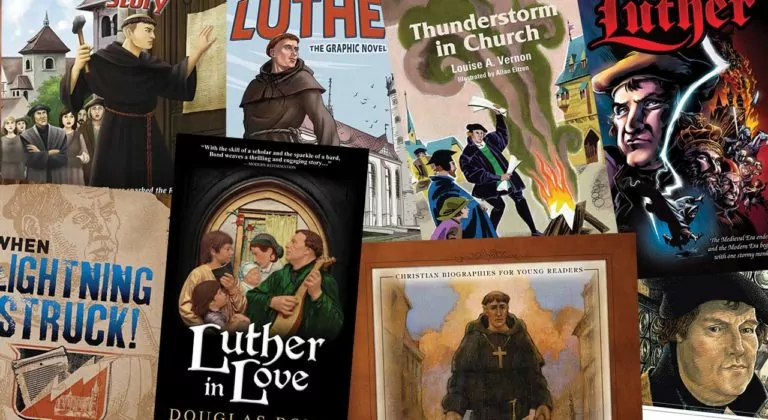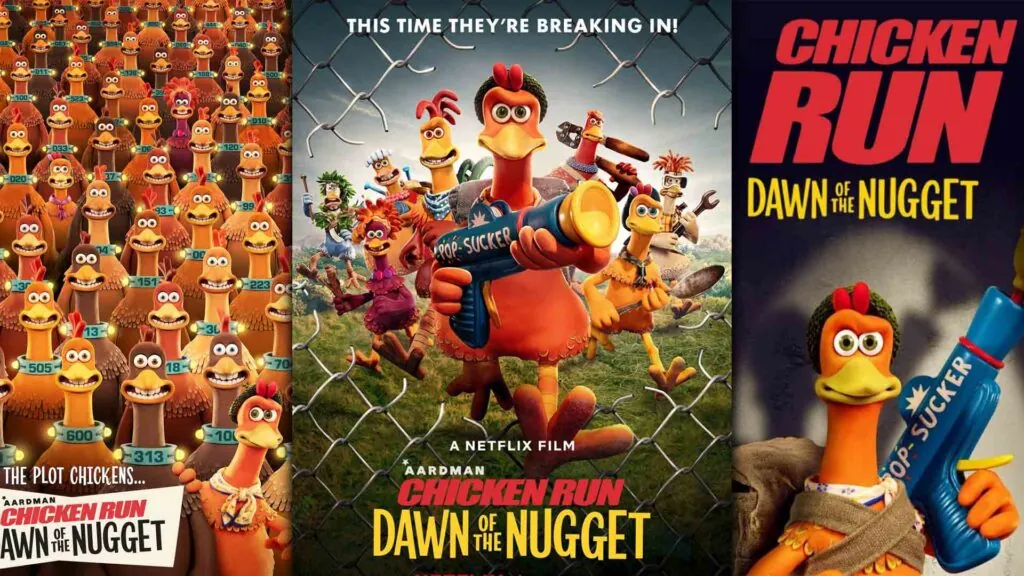Five hundred years ago a learned monk drew up 95 pointed arguments and asked for a debate. What he got was a revolution.
Fast forward five centuries, and on the very same evening that others are dressing up as demons and celebrating death, at least a few kids are putting on brown bathrobes and dressing up as a round Reformation giant. On Oct. 31, each year, we remember Luther posting his 95 theses, and we celebrate the man’s courage, his insight, and his love for the Lord.
Largely overlooked are his faults. Oh, yes, we know about his attempts at self-justification, and his crass insults, and even his anger, but in the books and films that are recommended below, Luther’s darkest side is hardly raised. Maybe it comes from a desire not to speak ill of the dead. After all, when we reminisce about our Great Aunt Ditty we fondly recall how she loved to sew doll clothes for all her grandchildren, but we don’t bring up the disagreeable face she made whenever a particular ethnic group crossed her path. The fifth commandment would seem to encourage us to talk only about what was good and praiseworthy about our dearly departed.
That’s a good approach for the Great Aunt Dittys of the world, but something more is needed when it comes to Christian heroes. Then there is a reason to acknowledge both the good and the bad. As Calvin said, our hearts are idol factories – so much so that we can take the proper respect (Heb. 13:7) we have for one of God’s servants and twist and pervert it into something that blocks our view of God. We go from respecting the man, to worshipping the legend, and getting angry if anyone dares mention his faults.
But acknowledging his flaws guards us against hero worship. It also keeps us from being blindsided by the critics who want to attack the good God did through him. When we understand that even a man after God’s own heart like David – giant-killer and slayer of tens of thousands – was also an adulterer and a murderer, we aren’t going to put him on a pedestal. And then we won’t have to worry about critics trying to knock him off that pedestal.
It’s important, then, to acknowledge that Luther said some dreadful things about the Jews. In his earliest writings he was kind and winsome, trying to evangelize to them. But in his later years he concluded that God was done with the Jews, and he wrote a 60,000-word treatise called On The Jews And Their Lies. In it he encouraged that their synagogues and homes be burned, their books and money taken, and their rabbis killed if they didn’t stop teaching. He also repeated, as true, lies about Jews poisoning wells and kidnapping children. This is Luther at his worst, writing a book that Nazis reprinted.
So how do we handle Luther’s dark side? We acknowledge it and clearly identify it for the sin that it is. And then we continue our 500th anniversary party. This was never supposed to be all about the man, but rather the wonderful truths he rediscovered about God’s grace and mercy and love. And when we understand our hero’s failings, then how can we help but glorify God all the more, appreciating how He can use fallen, frail, sinful sorts like Luther – and like you and me – to accomplish his glorious ends?
*****
It’s been said there are more books about Martin Luther than on any other human being. But some are dry and dusty. Some need a forklift to pick up. And some need a dictionary in hand just to get through them. These aren’t the kind of books we’re after.
Our focus is on engaging, and readable. So we’re suggesting novels, pictures books and comics that parents will enjoy reading to their kids. And there’s a movie, novels, and non-fiction for mom and dad, that they can finish in a quiet evening or two. These aren’t big books, and these aren’t long movies, but they are intriguing. My hope is that you’ll find a good match for everyone in your family.
CHILDREN’S BOOKS
Martin Luther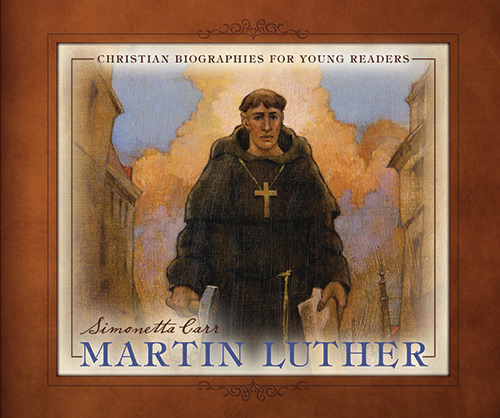
by Simonetta Carr
2016 / 62 pages
This is the perfect book for any 4th grader and up looking to do a school project on the Reformer. Like other entries in Simonetta Carr’s series of “Christian biographies for young readers” Martin Luther is a gorgeous book. It is a beautifully bound, with thick pages, and includes 12 full-page paintings among its 44 illustrations.
It is also well-researched, and wonderfully detailed. After reading more than a dozen works on Luther I was pleasantly surprised to still be learning so many new things from a children’s book. For example, I don’t think I’d ever before heard that Martin had a special relationship with his young brother Jacob, nor that Jacob might have been with him when Luther was “kidnapped” on his way home from the Diet of Worms. And it was interesting to learn that Luther’s famous “brand” – the Luther rose – was designed for him at the request of his protector, John Frederick of Saxony.
What makes this book special is how much Carr has managed to pack in its 60 pages. But that also means that even though this is a picture book, it is probably too much for children in Grades 1 or 2. I think the best bet is Grade 4 and up.
Overall, Carr gives a generous assessment of Luther, focussing on his strengths. But she is willing to at least note his faults, the biggest of which is what he wrote about the Jews in his later years. Carr makes brief mention of it, noting that he “wrote against the Jews” and there is no “excuse for writing what he did.”
I’d recommend this as a wonderful educational resource, and by that I mean that while it makes learning easy, this isn’t the type of frothy, brightly-colored picture book that young children will pick up simply for entertainment. It will need a teacher’s or parent’s prompt.
Thunderstorm in Church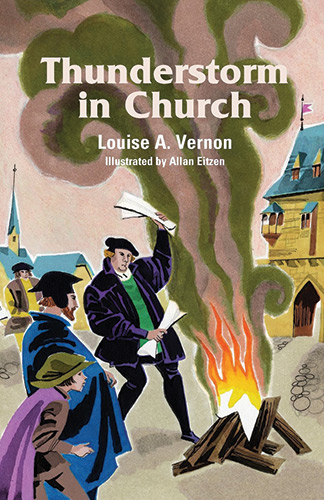
by Louise A. Vernon
1974 / 132 pages
It isn’t easy being the son of a giant.
In Louise Vernon’s children’s novel, we get to hear Luther’s story told from the perspective of his young son Hans, who is worried that he won’t measure up to his father.
Though I’m a bit outside the intended demographic, I found it a very fun read, and I think that’s because, with one of his offspring acting as the narrator, this is a really unique look at Luther. Hans reveals to us a father who is both funny and furious – a man of quick temper who also laughs a lot. Having Hans narrate also allows Luther to teach us, as he instructs his son, some of the truths that he uncovered about God’s grace – that we don’t have to buy the forgiveness that God freely offers.
Some reviewers have faulted the book for being too dialogue-driven, and there is a lot of talking. But Vernon inserts a few actions scenes as well, like when the town’s bullies want to teach the son of the famous Doctor Luther a lesson or two.
If your child is a reader, this is a book that could be enjoyed simply as entertainment – it is fun, even if it has some slower sections.
As an educational tool, the age-level this is aimed at – as young as Grade 3 – may have to be alerted that this is a fictionalized biography, and that this means only the general facts are true, but many of the details are just a matter of imagination.
Overall, Thunderstorm in Church is a wonderful book that could make for a nice night time read with your kids.
Also worth a mention
Old Testament historian Paul L. Maier’s picture book Martin Luther: A Man Who Changed the World is simply gorgeous, and a wonderful introduction to the man for younger readers.
RC Sproul also has a great picture book for younger children called The Man Who Wanted to Pray, about Luther teaching his barber how to talk to God. And what the barber learned from Luther, our children can learn from the barber. I should note that there is one picture of Jesus, with his face mostly, but not entirely obscured.
GRAPHIC NOVELS
Luther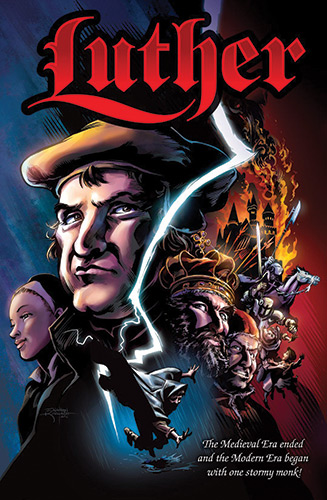
by Rich Melheim
illustrated by Jonathan Koelsch
2016 / 72 pages
I’ve reviewed other “comic biographies” and never enjoyed one more. Luther is scripted like a movie, has witty dialogue with actions scene interspersed, and the artwork is of the same quality you would find in Marvel or DC comics – it is fantastic!
Educational comics, as a genre, are valuable in that they make learning history a lot less painful. But very few of these educational graphic novels are the sort that a teen would just pick up and start reading. Luther is the exception. I don’t want to over-hype it – a kid who reads nothing but superhero comics will still find this a bit of a stretch – but it really is as good a comic as you will find.
Since this is intended for teens, I’ll note a few cautions. The word “crap” is mentioned three times, “ass” once, and “old fart” once. But when you consider this is a comic about the notoriously potty-mouthed Luther, this is really quite tame. I’ll also note there is a depiction of Christ on the inside back cover of the book that is not part of the story, but rather part of an ad for other comics by the same publisher. Also: the comic treats as fact that famous conclusion to Martin Luther’s speech at the Diet of Worms, where he is said to have declared, “Here I stand. I can do no other. God help me. Amen.” There is some dispute as to whether he ever said these words.
The comic has several strengths including the overall picture it gives of the happenings going on in the broader world that made it possible for Luther to both spark this Reformation and live into old age and die a natural death. I’ve always wondered why the Emperor didn’t just have him killed. Perhaps it was because, as we learn in this comic, Charles V was busy contending with Turkish expansion and might not have wanted to risk alienating any of his German princes.
Another strength is that while this account is sympathetic, it does note one of Luther’s weaknesses: that sometimes Luther’s pen got the best of him and he could write some “terrible and hateful words” denouncing Jews, Calvinists, and Anabaptists alike.
Overall this is a comic that teens and adults (who aren’t embarrassed to be seen reading a comic) will certainly enjoy.
Luther: Echoes of the Hammer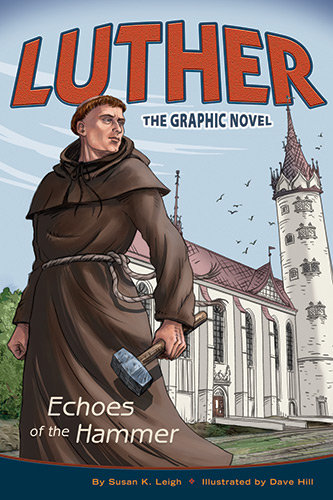
by Susan K. Leigh
illustrated by Dave Hill
2011 / 144 pages
I think this is the perfect compliment to the other Luther comic reviewed here. Whereas Luther is the more exciting of the two, it plays a little looser with the details. Meanwhile Luther: Echoes of the Hammer is a more reliable history lesson, but it isn’t as dramatic.
I tested this graphic novel on two of my nephews with mixed results. The older one, heading to grade 10, was happy to take a look, and thought it would be a great way to learn about Luther. The other, two years younger, seemed to think it was too much biography, and not enough comic book for his tastes.
As far as comics go, this one is quite an involved, even heavy, read. Interspersed throughout are explanations of key events, like the Diet of Worms, key terms, like “indulgences,” and key figures, like Charles of Spain, the Holy Roman Emperor. These one or two-page insertions really add to the narrative and make this a highly educational comic.
However, a few of these insertions will also trouble informed Reformed readers. In one list of Luther’s adversaries, Calvin is numbered among them! While it is true Calvin and Luther had their differences, it is surprising to see Calvin listed as an opponent. Especially when, some pages later, we find Erasmus listed as one of Luther’s supporters! While Erasmus was, like Luther, critical of the Roman Church, he never left it, and this led to strong, vitriolic disagreements with Luther. In fact Luther once called Erasmus, “the very mouth and organ of Satan.” It is downright silly, then, for the authors to list Erasmus as a friend if they are going to list fellow Reformer John Calvin as an adversary.
The only other quibble would be the overestimation the authors have of Philip Melanchthon, describing him as “a great Reformer, second only to Martin Luther.” Second? Really? How can they overlook Calvin like that?
Those quibbles aside, this is a impressive book. The writing is crisp, succinct and engaging. The artwork is attractive and instructive – many of these pictures are worth a thousand words. For example, in the pages covering Luther’s visit to Worms illustrator Dave Hill shows us the man’s quiet passion, his many supporters, and his opponents marshaled together. This gives us a good understanding of the setting, and thus a better understanding of the courage it took for Luther to stand up for what he knew to be true. Older teens will enjoy it, and many an adult too.
Also worth a mention
The same folks who created Luther: Echo of the Hammer, created a sequel, focused on his wife. Katie Luther is a little shorter, and a little less involved, but also quite enjoyable.
YOUNG ADULT FICTION
The Story of Martin Luther
by Danika Cooley
2015 / 231 pages
This is a treat!
The target audience is teens, but like any fantastic book, adults are sure to enjoy it too. In fact, this is the perfect book for any adults who feel a need to know more about church history but are a little reluctant to get started. That’s how I’d characterize myself. As a student I hated history – learning dates and names seemed pointless. Now I understand it is important to know where we came from, and I want to learn more….but I have no interest in learning it from a dry, dusty tome.
That’s why this was such a treat. In the hands of a talented writer, it doesn’t take much to make Luther’s life exciting. As doubt-filled as he was early on, the Reformer was bombastic after he understood that forgiveness is a gift given, not earned. This is a man who:
- was condemned by the pope as a heretic
- had 200 knights pledge to protect him
- didn’t want to marry lest he quickly leave his wife a widow
- was kidnapped
- masqueraded as a knight
- helped formulate the German language
- cared for Plague victims
- ended up marrying a nun
And it would be easy to go on and on.
While much of the day-to-day dialogue is fictionalized, a strength of the book is the many genuine quotes that are interspersed throughout (these are identifiable by the endnote numbers after such quotes). One example: in a debate at Lepzig University, Johann Eck hits Luther with a stinging question:
“Are you the only one who knows anything? With the exception of you, is all the church in error?”
It stung because Luther, plagued by self-doubt, had been wondering this very same thing. But Luther also knows that God’s truth doesn’t depend on Luther being brilliant. Nope – God can spread his truth using even the dumbest of beasts, as Luther notes in his reply:
“I answer that God once spoke through the mouth of a donkey.”
Another strength is how the book reveals more of the man – warts and all – than many other biographies. While Cooley largely skips over Luther’s love of scatological insults (this is a book intended for younger readers, after all) she does share how Luther’s anger stung not only the pope, but allies as well. She has Luther attempt to justify himself:
“It is precisely because of my outbursts that the Lord has used me! I never work better than when I am inspired by anger; for when I am angry, I can write, pray, and preach well, for then my whole temperament is quickened, my understanding sharpened.”
There is a time and place for anger, and God made good use of Luther’s righteous anger. But later, as Luther aged, it seems he came to indulge in anger, and that got him and others into trouble. Cooley shares how Luther’s anger cost him friends. And it was in his anger that he wrote his tract condemning the Jews, who were already facing persecution. So he used his influence for great good, but his anger meant that at times his influence also caused great harm.
When Lightning Struck! would make a great present to just about any reader, particularly if they have even the slightest interest in church history. I’d even recommend this to teens who have the same bad attitude towards history that I once did. For them, this might be a bit of a gamble, but if you can get your son or daughter to promise to read through the first 60 pages, that should have them hooked.
Luther in love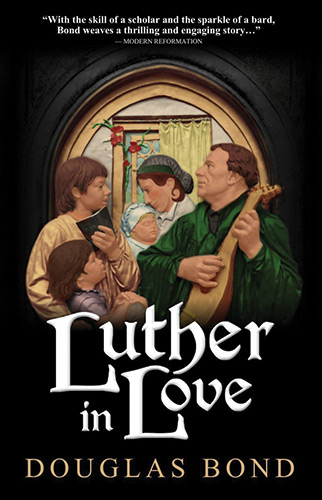
by Douglas Bond
2017 / 320 pages
Luther in Love shows us the Reformer from the perspective of his better half. The story begins with 62-year-old Luther spending an evening in his chair. He’s not in the best of health – worn out from a lifetime of controversy and conflict – and his dear wife knows that it can’t be long before he is gone.
So she has given herself a bittersweet project to complete. Others have written accounts of the Reformer, but always from one extreme or the other – either thinking him “the spawn of Satan” or “a living angel.” She wants the world to know the real man, and she’s going to record his story as he remembers it. But Katie doesn’t want her husband to know what she’s up to, so even as she’s prodding him about the past, and has paper and quill at the ready, he thinks she’s busy keeping track of the family finances and other business matters.
It’s a great premise and let’s Bond explore Luther’s life through the appreciative, but far from naive, perspective of his helpmeet. After all, who knows a man better than his wife?
One strength of the book is the thorough research evident throughout – we are immersed in Luther’s world! And then there is Bond’s writing – this is the fourth fictionalized biography Bond has written about Reformers, and he is a master of this form. Again and again I had to get up to find my wife and read sections to her that were simply too exciting, or too sweet, not to share.
Some of that sweetness comes up when the couple is teasing and debating each other. Bond gives us a wonderful look at how two souls can grow old together and continue growing in love for one another. It’s a book about Luther, but it’s also a model for marriage.
Of the many books I’ve read about Luther, this is one of the biggest. But it might just be the fastest read. That’s why I’d recommend it to anyone and everyone, teens and up. It is funny, entertaining, informative, sweet, challenging, and more.
Also worth a mention
Christine Farenhorst’s new novel, Katharina, Katharina is the Reformation as it happened far from the walls of Wittenburg. While Luther never makes an in-book appearance, he is still a central figure – Farenhorst gives us an intriguing look at this monk and his work by showing us how he was being debated and discussed by the regular folk of his day.
MARTIN AT THE MOVIES
Torchlighters: The Martin Luther Story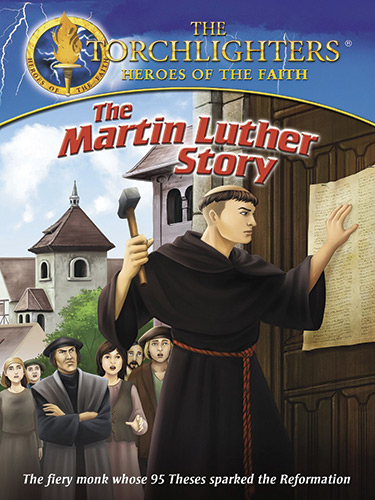
2016 / 34 minutes
The strength of this film is its short length. At just 34 minutes, it can be shown in the space of a single school period. For the pre-teens this is intended for, that might be just the right length, with the quick pace, and colorful animation sure to grab most students’ attention.
But the biggest weakness of this short film is….its length. It is far too short to tell this story with the gravitas it needs – Luther’s spiritual wrestling is dealt with in just 7 minutes! It also ends abruptly, with Luther busy translating the Bible into German in Wartburg Castle. The narrator then spends just a single minute summing up the whole of the second half of Luther’s life. And then the credits role.
I should note a couple of inclusions that might have been better left out. Luther is told that the very night he nailed up his 95 Theses, his long-time protector, Duke Frederick, had a dream about a monk writing on a church door with a quill that was so long it extended all the way to Rome “where it toppled the crown off of a lion.” This is presented as the reason Frederick was willing to defend his rebellious trouble-making monk: God had told him ahead of time that his monk was going to topple the pope. But while the movie portrays this as fact, there is reason to think this might just be a popular myth. Also, at the film’s conclusion, there is a passing, two or three second shot of a title page illustration from one of Luther’s books depicting Christ on the cross, with Luther and John Frederick I, Elector of Saxony kneeling below. I make mention of it, for any who consider this a violation of the Second Commandment.
That said, this is a great film for children who don’t yet have the attention span for a longer Luther film – it will certainly keep most children engaged, and does give a good overview. Check out the trailer here.
Martin Luther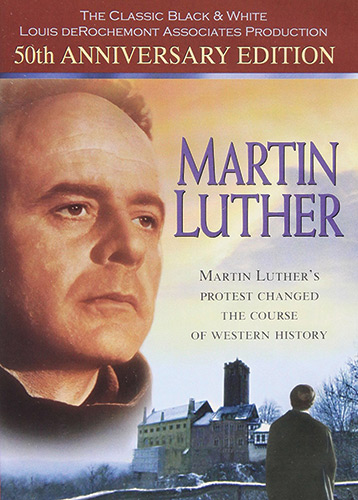
1953 / 105 minutes
What sort of film is Martin Luther? The sort that gets produced by a church, and yet gets nominated for an Oscar – solid theology paired with high production values. How often has that happened?
It does get off to a slow start; the first couple of minutes are more documentary than drama. But when we get introduced to Niall MacGinnis as Luther, his brilliant portrayal sweeps us into the story. We follow along, starting with his tormented time in the monastery, and continue all the way through to his marriage to an ex-nun. MacGinnis captures all the contradictions of the man – even as the Reformer stands before the Diet of Worms strong and defiant he is distraught and trembling. This is certainly among the best Christian films ever made.
As a caution I will note that while there is nothing graphic in the film (it is G-rated), some scenes are psychologically intense. I think that would just go over the heads of most children, but for some young sensitive sorts, Luther’s spiritual turmoil might be too much.
This is a black and white film, which is a mark against it in many minds. But if you’re considering showing this to your class or to your family, here’s the secret to helping them get into it: make the sound your priority! In a dialogue-driven film it’s the sound, much more than the visuals, that really matters. I still remember watching this with my Grade 6 classmates, years ago. The screen was small – minuscule by today’s standards – but this big box TV had great speakers. There was no fuzziness, no straining to understand what was being said – we could all follow it. And after 30 minutes or so, we were all hooked.
There are quite a number of films about Martin Luther, with at least a half dozen dramas, and more than a dozen documentaries. The best known is probably the 2003 Luther that played in major theaters, and starred Joseph Fiennes (of Shakespeare in Love fame). It is a wonderful film (and in color!) but marred by an instance or two where God’s name is taken in vain. As well, it focuses a little more on Luther’s external struggles with the powers that be, and a little less on his own internal struggles. That makes for more action, but less of a theological focus – more about Martin, but God somehow fades into the background. So the 1953 Martin Luther is the better educational film.
This would be great for a family movie night. I’ve seen kids as young as 7 enjoy it, though with younger children you’re going to want to break it into a few “chunks” so it’s spread out over two or three nights. But for those 12 and up, so long as they are “forced” to give it a half hour (“No, you can’t check your smartphone while watching this”) it will grab them and give them a good understanding of the amazing work God performed through this man. Watch the trailer here.
ADULT NON-FICTION
The heroic boldness of Martin Luther
by Steven J. Lawson
145 pages / 2013
My brother Jeff called this “a book that every Protestant minister should read….because it uses the story of the first Protestant minister, Martin Luther, to show what Protestant ministers should be doing with the word of God.”
To be clear, this isn’t so much a biography as it is an examination of Luther’s “conviction about the Word” and his approach to preaching. Before the Reformation, church services were dominated by the Mass, and by rituals, but Luther and others made preaching central. And not just preaching, but biblical preaching that was willing to be controversial, not for controversy’s sake, but because apostasy needed to be challenged, and sin needed to be named. There was a need to have God’s Word set loose.
Author Steven Lawson thinks that’s just as true today, so he’s hoping that Luther’s example – his respect for Scripture, his practice of reading through the whole Bible twice each year, his passionate delivery off the pulpit – can inspire others to go and do likewise.
That makes this a book that might seem like it would only be for ministers. But while it does definitely have particular relevance for them, all of us can learn from Luther’s zeal to grow in the knowledge of his Lord.
Martin Luther’s 95 Theses
by Timothy J. Wengert
2015 / 90 pages
If you want to understand Luther and the reforms he began, can there be a better place to start than his 95 theses?
When I first got my copy in the mail, I was struck by how short it was. This is the Pope-shaking document that God used to start it all? Shouldn’t it be…heavier? And if we were to take out the introduction, commentary, and study guide, Luther’s 95 theses only amounts to 13 or 14 pages!
Thankfully, Timothy Wengert stretches it out to (a still slim) 90 pages so he can present Luther’s pivotal work in the right context.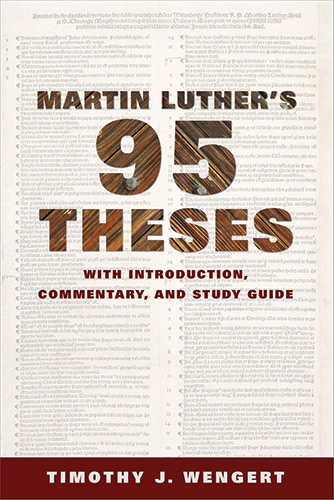
He uses his introduction to set the scene, explaining how the doctrine of indulgences evolved from bad to worse. He also includes two other documents – Luther’s letter to the Bishop of Mainz in which he respectfully asks the bishop to consider the theses, and Luther’s “Sermon on Indulgences and Grace” written a year later, in 1518, which was an explanation of his 95 theses intended for the common people. In the theses themselves, Wengert fills almost half of each page with footnotes to clarify Luther’s more difficult points.
So this is a short, but intense read – it will take some effort to work through it, but not all that much time.
And to make the going a little easier, Wengert has sprinkled in all sorts of fascinating facts.
- Did you know Luther may never have posted his theses to the church door? The first published account of this particular detail occurs in 1546, four months after Luther’s death.
- If he did post them he probably used wax, not nails.
- Luther’s 95 theses were not the first he had written. This was a common communication form among students and professors, and just one month before, in Sept 1517, Luther composed 97 theses against scholastic theology.
Outside of God’s Word, Luther’s 95 theses might be the key document that our Father used to reform his Church. It isn’t long. It is an education.
Also worth a mention
John Piper’s The Legacy of Sovereign Joy is about Luther, Calvin and Augustine, and the joy the three found in knowing God better. It is short, at just 150 pages, and an informative encouraging read. It’s also free as an e-book here.







